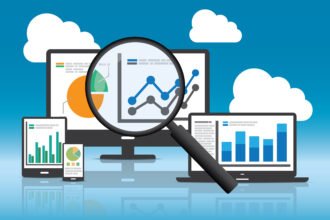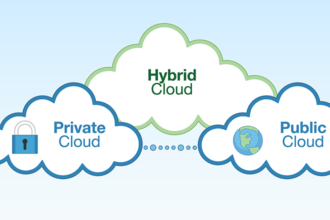Just as any other valuable data assets, big data management in cloud computing demands best practices. Since the starting of this decade, a higher number of organizations are considering cloud as their computing platform. This is especially true when it comes to big data management.
In a recent survey on Emerging Technology Best Practices Report, it was surfaced that almost 30% of enterprises have already adopted cloud-based solutions for their big data management. This makes it evident that more and more enterprises have already adopted the cloud-based services. As a result, it is highly critical to analyze how they will be applying the best practices of big data management. So as to make sure that their cloud-based data-driven application complies with the big data standards. Let’s discuss some of the examples of big data management best practices for cloud computing.
1. Maintain the Data Consistency
Maintaining data consistency across all platforms for your big data cluster to function properly. This is true whether your data exists in a cloud-based solution, on-premise or even a multi-platform hybrid system. Data consistency should be maintained even if your data is originated from cloud or on-premise and migrates from cloud to on-premise or vice-versa. Also, whether you’re using serverless architecture or microservices-based. Enterprise-scale data management, if involves cloud, makes it more complex but this shouldn’t stop you from using the cloud. We have observed from time to time that enterprises who use the cloud, find success in their ventures by extending the existing teams, skills, policies, infrastructure and best practices.
2. First Infrastructure, then Cloud
In a complex scenario that data consistency is highly important, you will require a few tools for data integration and infrastructure. This infrastructure is essential for you to move your data into different platforms. And thus, configuring this infrastructure is important before you start your journey with cloud-based big data solution. Backfitting it later would not only be risky but disruptive as well.
Once you have the infrastructure configured in the place, it is easy for you to simply extend your requirement to the cloud. If need requires, you should also be open to using additional tools that are available to optimize the cloud. When you are using these tools, you will be required to follow the best practices for cloud computing. Also, these tools need to validate data quality, master & metadata along with varying data speeds. Before you get started with different tools, make sure that your infrastructure is ready and so is your team.
3. Prioritizing Data Integration
As you move towards learning how to incorporate data integration solutions, you will come across a situation where you’ll have to adjust your approach towards data staging and landing. During the designing process, make sure you give proper thought to where the data processing should occur, will it cloud, on-premise or both? Also, it is important to confirm that your data management toolset is supporting protocols and interfaces of major cloud-based platforms and applications. In the past few years, we’ve observed an increase in the adoption of cloud-based Hadoop. This requires multiple points of interface such as MapReduce, Hive, Spark and more. Likewise, look out for the API support that is prerequisite with the cloud provider of your choice.
4. Supporting Multiple Metadata
Data communication trends are moving toward real-time, your data management tools should be compatible with various ‘right-time’ interfaces. These could range from the micro batch and offline batch to on-demand and real-time. We have observed a pattern in the last few years. The pattern being, for metadata management, organizations rely heavily on their integration platforms and tools.
That said, be sure that your platform and tools support business, technical and operational types of metadata that are accessible by multiple entities. Lastly, many clouds are capturing IoT and Sensor data but these tend to be poor in the metadata. Hence, look out for tools that can potentially help you in making this data metadata-rich, for example, by injection.
5. Governing Data Holistically
If you’re an organization who already has a data governance program, you should opt for reiterating the existing policies since they might be outdated considering the fact that they were designed for on-premise data management. This way you’ll also be able to comply with the data traveling to and far from the cloud. If you do not have an existing data governing policies, then you may consider cloud as your initiating point with the same.
Businesses tend to focus more on the gathering, storing, and processing stages of Big Data. This makes them ignore other important aspects like data destruction. What happens when your business no longer requires a certain set of data that was once very important? More importantly, what happens when that data gets into the wrong hands like your business competitors? Therefore, it is essential that businesses have a plan of action when it comes to disposing off the data in a safe and responsible manner. Experts suggest that working with agencies that specialize in data destruction should be something that one could explore. Businesses need to know more on data destruction with the rising number of data crimes that are emerging in recent years.
Data governance is indeed a highly important success factor for the majority of the data-driven initiatives. It secures you from the non-compliant usage of data and also makes sure that the data management goes parallel with the business goals of the organization. Also, the effect of data governance is not just limited to this. It also elevated the quality of the data, trust and usability.
Final Thoughts
As we discussed before, with more and more organizations moving towards the cloud-based data management platform, moving forward in parallel with the best practices would only prove fruitful. The good news being, you would not be required to iterate a lot to fit in the cloud-based data management mode.









